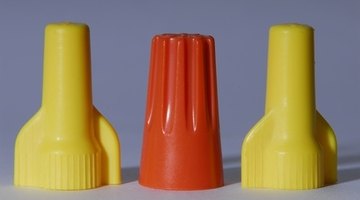How to Splice High Voltage Cable
Splicing electrical cable is the process of joining two or more wires together to form a connection. Using a wire nut will not only cap the end of the connection, but also provide a durable and safe termination for the electrical cable. Wire nuts are available in various sizes depending on the gauge of the wire. Additionally, wire nuts are color coded to help indicate the use of each wire, such as hot, neutral, or ground.

-
Turn off any electrical power to the cables to be spliced together.
-
Strip away three inches of the outer insulation on the end of each of the electrical cables to be spliced together. Use the utility knife to careful cut down the edge or the center between the wiring.
-
Strip away one inch of the insulation on each wire inside the cables.
-
Twist all the same colored wires (red to red, white to white, black to black, and bare to bare) together in a clockwise direction.
-
Twist a wire nut on the end of each of the twisted sets of wires. Twist the wire nuts in a clockwise direction to lock them down.
-
Wrap electrical tape around the wire as it enters the wire nut and up over the base of the wire nut to provide additional protection. Leave about a half inch of the end of the nut exposed to help see the color of the wire nut.
References
Resources
Tips
- It may help to identify the electrical wires and their use, by using the color coded wire nuts on the ends of the connections. Typically, red is for hot, white is for neutral, and green is for ground.
Warnings
- Do not attempt to connect or splice any electrical wiring that is still connected to a power source, as this could result in an electrical shock or electrocution.
Writer Bio
Laurie Brown has worked as a high school English teacher for the last several years and loves writing. She enjoys helping her students develop a love and appreciation for writing, reading, and literature. Laurie has a degree in education with a major in English. Currently she is a writer for eHow.
Photo Credits
- wire nuts image by Paul Moore from Fotolia.com
More Articles



